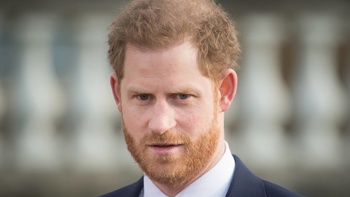

A man suffered extensive burns to his face when a fire ignited inside his throat and flames emerged from his mouth during what was supposed to be a routine surgery.
Staff raced to pour water and saline over the patient but he suffered extensive burning to his head, nose, lips, and shoulder. The man’s family said they believed the fire dramatically shortened his life.
“The memories of his burnt face still haunt us,” his daughter told a health watchdog, which today criticised the surgeon who operated on the man.
According to a decision from Deputy Health and Disability Commissioner [HDC] Carolyn Cooper, the man in his 70s was battling squamous papilloma, or benign growths that occur in the mouth.
He’d undergone similar surgery at least 10 times since 2012, intended to remove constant build-ups of cell tissue.
During previous surgeries, the man had suffered vocal chord spasms.
For this surgery in February 2020, the anaesthetist minimised the risk of this by managing his airflow using transnasal humidified rapid insufflation ventilatory exchange, or THRIVE.
Part of the surgery involved the use of a laser, which policy dictated must be in standby mode when not being used because of the risk of igniting drapes or other objects.
When it was used, the patient’s oxygen was lowered to 30 per cent.
As the surgery came to an end, the surgeon discovered a small piece of diseased tissue. He used diathermy, a surgical treatment that uses an electrical current to cut the tissue.
THRIVE guidelines dictate diathermy treatment must not be used while THRIVE is in operation.
During this last-minute procedure, the diathermy treatment created an electrical arc that likely connected with a “surgical plume” - possibly burnt tissue smoke or vapour rising from the electrical surgical device.
It’s believed the plume ignited, spreading to the plastic breathing circuit. Immediately, the surgeon yelled “fire” and smothered the flames with wet towels.
As flames emerged from the patient’s mouth, the anaesthetist turned off the oxygen flow and water and saline were tipped on the patient’s face. The fire was extinguished within seconds.
“There were obvious burns to Mr A’s head, nose, lips, and left shoulder, but no airway burns were identified,” Cooper said in her decision.
He was discharged from hospital three weeks later, but developed respiratory issues and was admitted to intensive care.
The man later developed laryngeal cancer and died last year.
Surgeon in breach of the Code
While Te Whatu Ora concluded the fire was likely caused by the diathermy surgical device that used electrical currents, the surgeon disagreed with this finding.
He said the cause was unlikely to be the surgical plume, as the device had an internal suction feature to remove any plume.
“It is not a logical and conjoint explanation of how the fire could have developed,” he told the HDC.
But while the fire’s cause wasn’t entirely clear, the HDC agreed the facts pointed to the plume being the likely site of ignition.
There were differing accounts of whether the anaesthetic team was informed the surgeon was using diathermy treatment at the end of the surgery.
Cooper ruled it was likely the anaesthetist team was told the surgery was at an end and did not anticipate further treatment.
/cloudfront-ap-southeast-2.images.arcpublishing.com/nzme/SQBUTLV4OGS2GL25U4DHEO4W7U.jpg)
Deputy Health and Disability Commissioner Carolyn Cooper. Photo / Supplied
“I am concerned that [the surgeon] did not communicate with the anaesthetic team adequately before he used the monopolar suction diathermy when the surgery was almost at an end,” Cooper wrote in her decision.
She found the surgeon was in breach of the Code of Health and Disability Services Consumers’ Rights.
The injuries “had a significant impact on the quality of Mr A’s life in the remaining years before his passing,” she said.
“Notwithstanding the above, I commend [the surgeon] for his rapid response and the actions he took once the fire ignited.
“I also accept that it was [the surgeon’s] intention to improve Mr A’s quality of life, and that he did not intend to cause Mr A any harm.”
Cooper said no errors were identified on the part of Te Whatu Ora.
“Overall, clinical staff had a good understanding of the factors that may cause a fire, and all precautions were taken when the laser was being used during surgery.”
Folllowing the incident, details were shared with practitioners across New Zealand and Australia. Te Whatu Ora also updated its own laser policy.
“The risk of fire and/or patient burns is now part of the safety discussion around the theatre environment, and this has been integrated into various parts of staff training,” the decision said.
The surgeon wrote an apology letter to the man’s family.
Ethan Griffiths covers crime and justice stories nationwide for Open Justice. He joined NZME in 2020, previously working as a regional reporter in Whanganui and South Taranaki.

Take your Radio, Podcasts and Music with you









